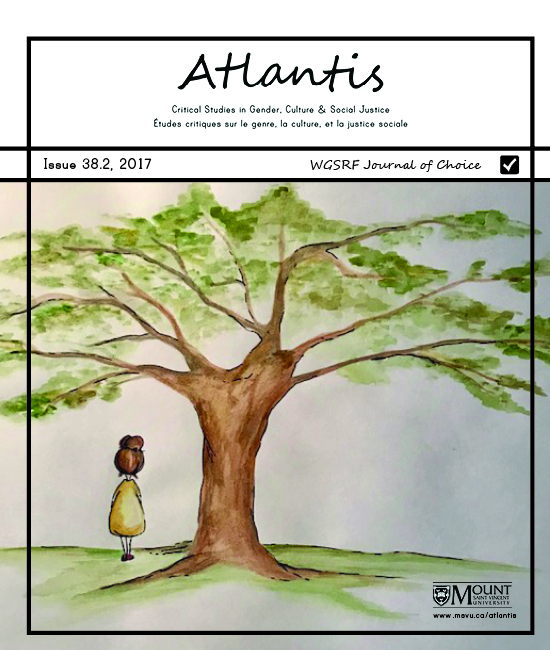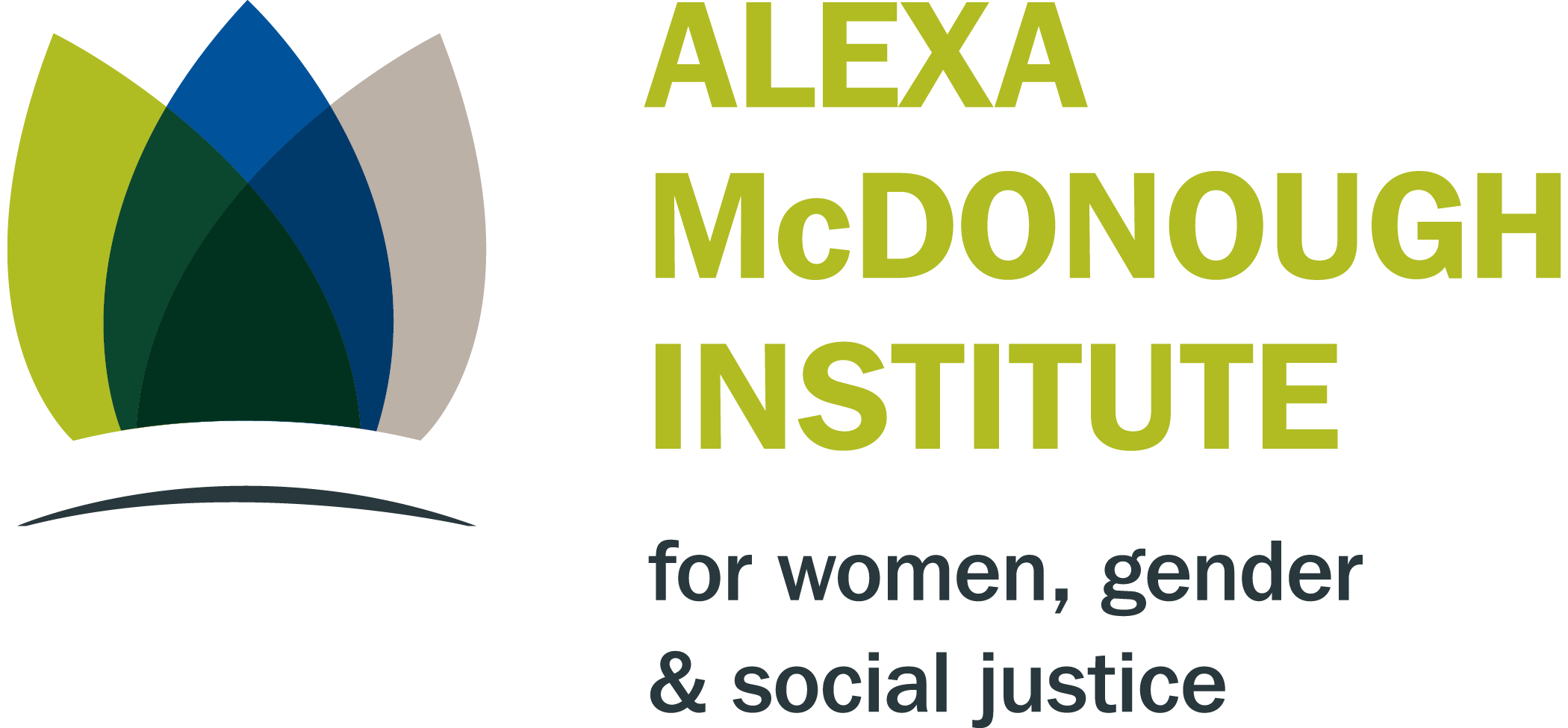The Digitization of Neurodiversity: Real Cyborgs and Virtual Bodies
Mots-clés :
Neurodiversity, The self online, Mental illness, Postcolonial feminism, Disability theoryRésumé
Abstract
Motivated by cultural associations between neurodiversity and digital technology, this paper explores digital identity politics by considering the online experiences of people with mental disabilities. I argue that the Internet, even while it provides opportunities for the production of powerful digital feminist counterpublics, can reify the ideological disembodiment and devaluation of identity. This, I argue, limits the Internet’s ability to represent and support disability identities, as well as other forms of identity. I call for the centering of disability theory in digital feminist thought as a way of promoting intersectionality and providing new theoretical methods.
Résumé
Motivé par les associations culturelles entre la neurodiversité et la technologie numérique, cet article explore la politique de l’identité numérique en examinant les expériences en ligne de personnes ayant un handicap intellectuel. Je soutiens qu’Internet, même s’il fournit des occasions de créer des publics féministes et des contre-publics numériques puissants, peut réifier la désincarnation idéologique et la dévalorisation de l’identité. Cela, je soutiens, limite la capacité d’Internet à représenter et à soutenir les identités du handicap, ainsi que d’autres formes d’identité. J’appelle au recentrage de la théorie du handicap au sein de la réflexion féministe numérique comme un moyen de promouvoir l’intersectionnalité et de fournir de nouvelles méthodes théoriques.
Références
Alcoff, Linda. 2006. Visible Identities: Race, Gender, and the Self. New York, NY: Oxford University Press.
Baym, Nancy K. 2006. “Finding the Quality in Qualitative Research.” In Critical Cyberculture Studies, edited by David Silver and Adrienne Massanari, 79-87. New York, NY: New York University Press.
Broder, Melissa. 2016a. So Sad Today: Personal Essays. New York, NY: Grand Central Publishing.
____. “@SoSadToday.” Twitter. https://twitter.com/sosadtoday.
____. 2016. Twitter post. August 13, 6:05pm. https://twitter.com/sosadtoday/status/764583625249681409.
____. 2016. Twitter post. March 18, 1:29pm. https://twitter.com/sosadtoday/status/710880866830917632.
____. 2016. Twitter post. March 13, 11:15pm. https://twitter.com/sosadtoday/status/709216284219670528.
____. 2016. Twitter post. July 28, 6:01pm. https://twitter.com/sosadtoday/status/758784547718885376.
____. 2016. Twitter post. March 13, 3:05pm. https://twitter.com/sosadtoday/status/709093023804735488.
____. 2016. Twitter post. August 12, 12:34am. https://twitter.com/sosadtoday/status/763956701191995392.
____. 2016. Twitter post. July 24, 10:15pm. https://twitter.com/sosadtoday/status/757398776944427008.
Case, Amber. 2010. “We Are All Cyborgs Now.” TEDWomen, December. http://www.ted.com/talks/amber_case_we_are_all_cyborgs_now?language=en.
Dewey, Caitlin. 2015. “Is the Internet Giving Us All ADHD.” The Washington Post, March 25. https://www.washingtonpost.com/news/the-intersect/wp/2015/03/25/is-the-internet-giving-us-all-adhd/?utm_term=.4d6492e4cdeb.
Fraser, Nancy. 1990. “Rethinking the Public Sphere: A Contribution to the Critique of Actually Existing Democracy.” Social Text 25/26: 56-80.
Gray, Mary L. 2013. “Negotiating Identities/Queering Desires: Coming Out Online and the Remediation of the Coming-Out Story.” In Identity Technologies: Constructing the Self Online, edited by Anna Poletti and Julie Rak, 167-197. Madison, WI: University of Wisconsin Press.
Haraway, Donna. 2000 [1984]. “A Cyborg Manifesto: Science, Technology, and Socialist-Feminism in the Late Twentieth Century.” In The Cybercultures Reader, edited by David Bell and Barbara M. Kennedy, 291-324. London, UK: Routledge.
Jack, Jordynn. 2014. Autism and Gender: From Refrigerator Mothers to Computer Geeks. Champaign, IL: University of Illinois Press.
Kafer, Alison. 2013. Feminist, Queer, Crip. Bloomington, IN: Indiana University Press.
Mittell, Jason. 2001. “A Cultural Approach to Television Genre Theory.” Cinema Journal 40 (3): 3-24. doi:10.1353/cj.2001.0009.
Mlotek, Haley. 2016. “The Hidden Vulnerabilities of @SoSadToday.” The New Yorker, March 25. http://www.newyorker.com/books/page-turner/the-hidden-vulnerabilities-of-sosadtoday.
Mohanty, Satya P. 2000. “The Epistemic Status of Cultural Identity: On Beloved and the Postcolonial Condition.” In Reclaiming Identity: Realist Theory and the Predicament of Postmodernism, edited by Paula M. L. Moya and Michael R. Hames-García, 29-66. Berkeley, CA: University of California Press.
Moya, Paula M. L. 2000. “Postmodernism, ‘Realism,’ and the Politics of Identity: Cherríe Moraga and Chicana Feminism.” In Reclaiming Identity: Realist Theory and the Predicament of Postmodernism, edited by Paula M. L. Moya and Michael R. Hames-García, 67-101. Berkeley, CA: University of California Press.
Nadesan, Majia Holmer. 2005. Constructing Autism: Unravelling the 'Truth' and Understanding the Social. New York, NY: Routledge.
Siebers, Tobin. 2008. Disability Theory. Ann Arbor, MI: University of Michigan Press.
Travers, Ann. 2003. “Parallel Subaltern Feminist Counterpublics in Cyberspace.” Sociological Perspectives 46 (2): 223-237. doi:10.1525/sop.2003.46.2.223.
Téléchargements
Publié
Numéro
Rubrique
Licence
© Atlantis: Études critiques sur le genre, la culture, et la justice 2018

Cette œuvre est sous licence Creative Commons Attribution 4.0 International.
Les auteurs qui publient dans cette revue acceptent les conditions suivantes:
1. Les auteurs conservent les droits d’auteur et accordent le droit de première publication à la revue. L’œuvre est simultanément sous licence internationale Creative Commons Attribution 4.0 qui permet à d’autres personnes de la partager en citant dans les remerciements l’auteur de l’œuvre et sa publication initiale dans cette revue.
2. Les auteurs savent que les articles publiés dans Atlantis sont indexés et disponibles par le biais de divers outils de recherche universitaires et professionnels, y compris, entre autres, Erudit.
3. Les auteurs peuvent conclure des ententes contractuelles supplémentaires et distinctes pour la distribution non exclusive de la version de l’article publiée par la revue (c’est-à-dire, l’afficher dans un dépôt institutionnel ou la publier dans un livre), en signalant qu’elle a été initialement publiée dans cette revue.
4. Les auteurs sont autorisés et encouragés à prépublier leur œuvre, c’est-à-dire à la publier en ligne (dans un dépôt institutionnel ou sur leur site Web, par exemple) avant et pendant le processus de soumission. Cela peut conduire à des échanges productifs, ainsi qu’à ce que le travail publié soit cité plus tôt et plus souvent. Renseignez-vous davantage ici sur la prépublication.







